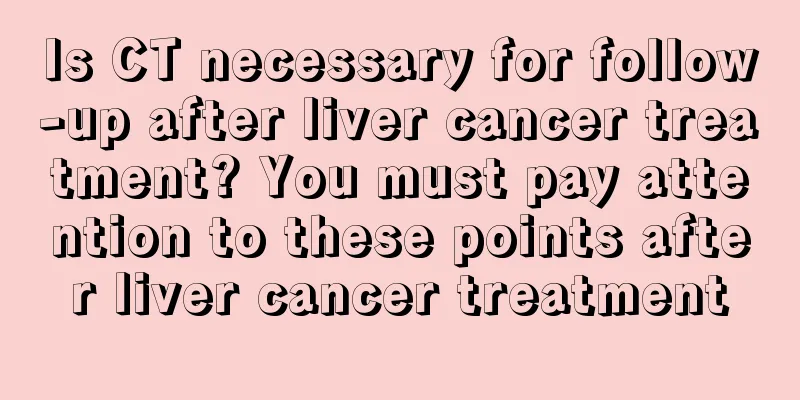Is CT necessary for follow-up after liver cancer treatment? You must pay attention to these points after liver cancer treatment

|
Liver cancer is one of the most common serious diseases in recent years. When the condition is serious, it can cause the patient to lose his life directly. Therefore, liver cancer patients should not be too careless in normal times and should take timely treatment. In life, many liver cancer patients have their disease disappear after treatment, and many need to be followed up after the disease is treated. However, some patients have asked why they must undergo CT scans during follow-up. Can this examination be avoided? In fact, follow-up after liver cancer treatment is a CT scan. Is CT scan necessary for follow-up after liver cancer treatment? Many patients may find that during the follow-up of liver cancer, doctors will prescribe some imaging examinations for patients, among which doctors will repeatedly emphasize that patients should undergo CT examinations. CT scans have become a common routine examination method in the diagnosis and follow-up of liver cancer. It can clearly show the size, shape and richness of liver cancer, and also allow doctors to know the relationship between liver cancer and intrahepatic ducts, so as to make further clear judgments. In addition, after treatment, CT can be used as an evaluation of the efficacy of the treatment. It can determine the patient's chance of tumor recurrence. CT is an indispensable part of the patient's follow-up. Since monitoring tumor recurrence is the main purpose of the follow-up, abdominal CT scans can well detect the chance of tumor recurrence. Its sensitivity and specificity are much higher than B-ultrasound, and it is more affordable. Therefore, many doctors recommend CT examinations when following up on liver cancer patients. However, some liver cancer patients may worry about the side effects of CT scans, and worry that it is a radioactive examination that may cause cancer recurrence, so they are more reluctant to have CT scans. However, studies have shown that although exposure to X-rays can cause a variety of tumors, the risk of cancer caused by CT scans depends on the age of the patient undergoing the examination. If children are exposed to excessive radiation, they are more likely to develop leukemia and thyroid cancer. If the patient is older, the incidence of lung cancer will increase, but these risks are only increased, and cancer will not actually occur. Compared with the importance of monitoring the recurrence of liver cancer, CT scans are inevitable, even if it has certain risks. Kind tips If the doctor recommends a CT scan during follow-up for liver cancer patients, the patients should not be too averse and should follow the doctor's instructions to have the examination. This way they can know the recovery of their liver and monitor the recurrence rate of their cancer, allowing the doctor to make a better treatment plan based on their situation. |
<<: What are the typical symptoms of early lung cancer? Three typical symptoms of early lung cancer
Recommend
What are some ways to make your buttocks more perky?
In daily life, long-term sitting at work can easi...
Can cervical kyphosis be restored?
Our cervical vertebra is a part of the spine and ...
How to use a coffee machine
As the pace of society gradually accelerates, mor...
Treatment of hormone allergy
Although many drugs can achieve certain therapeut...
How much does a brain cancer check cost
The issue of hospital examinations and drug charg...
How long can one live with respiratory failure in the late stage of bone cancer
How long can you live after bone cancer reaches t...
Luxury leather goods care
As the living standards in our country improve, m...
I don't eat and feel hungry. I feel sick when I eat something.
Most patients with stomach problems will experien...
5 causes of esophageal cancer
The five causes of esophageal cancer include: (I)...
What is osteosarcoma
Everyone is familiar with osteosarcoma. It is a t...
Is it good to do facial care regularly?
As the saying goes, everyone loves beauty. People...
Explore the causes of rectal cancer
In life, many people suffer from gastrointestinal...
What are the early symptoms of liver cancer? Eat these four foods to prevent liver cancer
According to statistics, there are 430,000 new ca...
Smoking plus the "four trends" are the main reasons for the surge in lung cancer
What is the cause of lung cancer? Lung cancer has...
How to treat shoulder muscle strain symptoms
Suffering from shoulder muscle strain has a parti...









